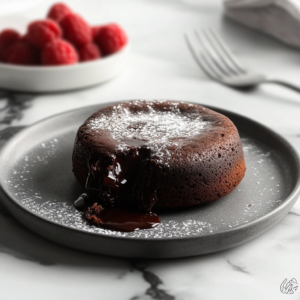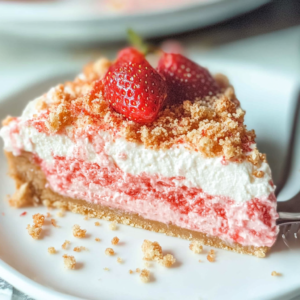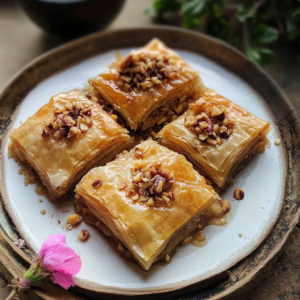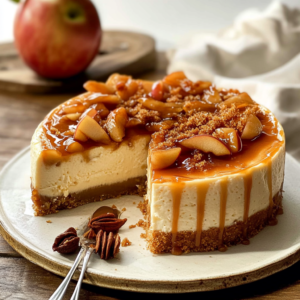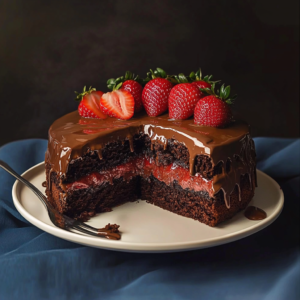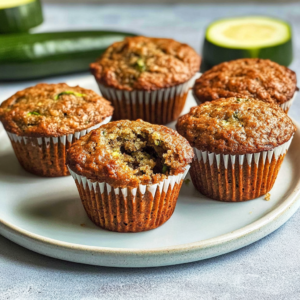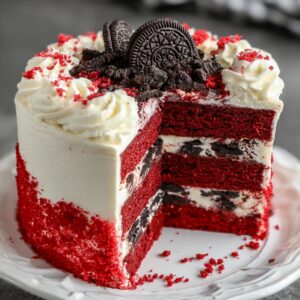Jump to:
Experience the magic of Japanese souffle pancakes, a delightful breakfast treat that has taken the culinary world by storm. These incredibly fluffy, jiggly pancakes have become a sensation both in Japan and internationally for good reason. Unlike traditional flat pancakes, Japanese souffle pancakes are thick, cloud-like creations that wobble when served. The secret to these pillowy delights lies in the technique of folding whipped egg whites into a simple pancake batter, creating height and incredible texture. If you’ve ever seen videos of these pancakes jiggling on a plate, you’ll understand why Japanese souffle pancakes have captivated food enthusiasts everywhere.
Why Japanese Soufflé Pancakes Work with Japanese Souffle Pancakes
Japanese souffle pancakes work because of the scientific principles behind them. The magic happens when stiff meringue (beaten egg whites with sugar) is gently folded into the batter. This technique incorporates millions of tiny air bubbles into the mixture, which expand when heated, creating that signature souffle-like rise. The low cooking temperature is crucial for Japanese souffle pancakes as it allows the pancakes to cook through without collapsing or burning, giving them time to set properly while maintaining their height.
Another reason Japanese souffle pancakes work so well is the balance of ingredients. The cake flour used provides less gluten development than all-purpose flour, resulting in a more tender texture. Meanwhile, the baking powder provides additional leavening power to help the pancakes rise and maintain their structure. The careful cooking method—using both direct heat and steam—ensures even cooking from all sides, allowing the Japanese souffle pancakes to develop their characteristic tall, fluffy shape.
Why You'll Love This Recipe
- Incredibly light and fluffy texture that feels like eating a cloud
- Impressive presentation that will wow your family or guests
- Delicate sweetness that pairs beautifully with toppings
- The fun jiggly motion when you serve them fresh
- A unique breakfast experience different from regular pancakes
- The satisfaction of mastering a trendy, restaurant-quality dish at home
Once you’ve mastered these Japanese souffle pancakes, you’ll find yourself making them again and again. They’re perfect for special occasion breakfasts, weekend brunches, or anytime you want to elevate your breakfast game. The process of making these pancakes is almost as enjoyable as eating them—there’s something deeply satisfying about watching them rise and develop that signature jiggle.
What You’ll Need for Japanese Soufflé Pancakes

Ingredients
- 2 large eggs (50g each without shell)
- 1½ Tbsp whole milk
- ¼ tsp pure vanilla extract
- ¼ cup cake flour
- ½ tsp baking powder
- 2 Tbsp sugar (for meringue)
- 1 Tbsp neutral oil (for greasing the pan)
- 2 Tbsp water (for steaming)
For serving (optional):
- ½ cup heavy (whipping) cream
- 1½ Tbsp sugar (for whipped cream)
- 1 Tbsp confectioners’ sugar (for dusting)
- Fresh berries (strawberries, blueberries, etc.)
- Maple syrup
Tools
- 12-inch nonstick frying pan with lid
- Kitchen scale (for precise measurements)
- Electric mixer (hand or stand mixer)
- Two mixing bowls (for separating eggs)
- Sifter (for cake flour and baking powder)
- Whisk
- Ladle or serving spoon
- Offset spatula (for flipping)
- Infrared thermometer gun (optional but helpful)
- Timer
How to Make Japanese Soufflé Pancakes




Creating perfect Japanese souffle pancakes requires attention to detail and patience, but the results are well worth the effort:
- Prepare optional whipped cream: If desired, make fresh whipped cream by placing heavy cream and sugar in a bowl set over an ice bath. Whisk until medium to firm peaks form, then refrigerate until serving time.
- Separate eggs: Carefully separate 2 large eggs into whites and yolks in different bowls. Place the egg whites in the freezer for 15 minutes—this helps create a more stable meringue.
- Prepare yolk mixture: While the egg whites chill, whisk the egg yolks with milk and vanilla extract until thick and frothy. Sift in the cake flour and baking powder, then whisk until just combined. Be careful not to overmix.
- Make meringue: Remove the partially frozen egg whites from the freezer. Beat with an electric mixer until frothy, then gradually add sugar while continuing to beat. Increase speed to high and beat until stiff peaks form—the meringue should be glossy and hold a peak when the beater is lifted.
- Preheat pan: Heat a nonstick frying pan to 300°F (150°C) over the lowest heat setting. Brush with oil and wipe off any excess with a paper towel.
- Fold meringue into batter: Fold the meringue into the yolk mixture in three stages. First, add one-third of the meringue and whisk to lighten the batter. For the remaining additions, fold gently with a whisk, taking care not to deflate the air bubbles.
- Cook the pancakes: Using a ladle or serving spoon, place scoops of batter in the pan to form three pancakes. Stack the batter high rather than wide. Add water to the empty spaces in the pan, cover with the lid, and cook for 6-7 minutes.
- Add more batter: After 2 minutes, open the lid and add one final scoop of batter to each pancake. Cover and continue cooking.
- Flip the pancakes: After 6-7 minutes, very gently check if the pancakes can be lifted with an offset spatula. If they release easily, carefully flip them with a rolling motion. Add more water for steam, cover, and cook for another 4-5 minutes.
- Serve: Once beautifully browned on both sides, transfer to serving plates. Top with whipped cream, fresh berries, dust with powdered sugar, and drizzle with maple syrup.
The key to successful Japanese souffle pancakes is patience and gentle handling. The cooking process takes time, but watching these pancakes rise and develop their signature texture is a rewarding experience. Remember that maintaining the right temperature is crucial—too hot, and they’ll burn before cooking through; too cool, and they won’t rise properly.
Serving and Storage Tips for Japanese Soufflé Pancakes
Serving Tips
- Serve immediately: Japanese souffle pancakes are at their fluffiest right after cooking. They will slowly deflate as they cool, so timing is everything.
- Warm plates: Pre-warm your serving plates to keep the pancakes warm longer.
- Presentation matters: Stack the pancakes for an impressive height display—this showcases their fluffy texture.
- Topping suggestions: Besides the classic whipped cream and berries, try honey, chocolate sauce, matcha cream, or red bean paste for an authentic Japanese twist.
- Capture the jiggle: Don’t forget to gently shake the plate before serving to show off the signature jiggle that makes Japanese souffle pancakes so fun!
For storage, Japanese souffle pancakes are best enjoyed fresh, but if you have leftovers, store them in an airtight container in the refrigerator for up to 2 days. To reheat, warm them gently in the microwave for 15-20 seconds. Note that reheated pancakes won’t be as fluffy as freshly made ones, but they’ll still taste delicious.

Mistakes to Avoid When Making Japanese Soufflé Pancakes
Even experienced cooks can encounter challenges when making Japanese souffle pancakes for the first time. Here are some common mistakes to avoid:
You Must Know
- Overbeating the egg white meringue until it becomes grainy
- Using too much force when folding the meringue into the batter, which deflates the air bubbles
- Cooking the pancakes at too high a temperature, causing them to brown quickly but remain raw inside
- Forgetting to add water for steam, which helps cook the pancakes evenly
Another critical mistake is trying to flip the pancakes too early. If you try to move them before they’ve set enough, they’ll collapse or tear. Wait until they easily release from the pan when gently tested with a spatula. Also, be careful not to overmix the batter once the flour is added to the egg yolks—this develops gluten and leads to tough pancakes instead of tender ones.
Chef's Helpful Tips
- Use a kitchen scale for precise measurements—Japanese souffle pancakes require accuracy
- Partially freeze egg whites for 15 minutes before whipping for more stable meringue
- Use a whisk rather than a spatula for folding to maintain more air in the batter
- Cook pancakes in batches of three to ensure there’s enough space in the pan
- Maintain a steady low temperature throughout cooking—aim for 300°F (150°C)
Another professional tip is to use ring molds if you want perfectly shaped Japanese souffle pancakes with straight sides. Simply place greased ring molds in the pan, fill them about 80% with batter, and follow the same cooking method. When it’s time to flip, carefully remove the rings using tongs before turning the pancakes.
Remember that making perfect Japanese souffle pancakes might take a couple of attempts. Don’t be discouraged if your first batch isn’t perfect—each time you make them, you’ll improve your technique and develop a better feel for the process.
Suggestions for Japanese Soufflé Pancakes Variations
While the classic version of Japanese souffle pancakes is delightful, you can experiment with these creative variations:
- Matcha Japanese Souffle Pancakes: Add 1-2 teaspoons of matcha powder to the egg yolk mixture for a beautiful green color and subtle tea flavor.
- Chocolate Japanese Souffle Pancakes: Replace 1 tablespoon of cake flour with cocoa powder for a rich chocolate version.
- Citrus Japanese Souffle Pancakes: Add lemon or orange zest to the batter and serve with citrus curd for a refreshing twist.
- Autumn Spice Japanese Souffle Pancakes: Add cinnamon, nutmeg, and a touch of ginger to the batter, then serve with apple compote.
- Savory Japanese Souffle Pancakes: Reduce the sugar, add herbs and grated cheese to the batter, and serve with smoked salmon and cream cheese for a brunch variation.
You can also experiment with different toppings for your Japanese souffle pancakes. Try black sesame sauce, kinako (roasted soybean flour), or kuromitsu (Japanese black sugar syrup) for authentic Japanese flavors. For a summer treat, serve with fresh peaches or a scoop of ice cream—the warm pancakes and cold ice cream create a wonderful contrast.

FAQs:
Deflating often happens when the meringue isn’t stiff enough or gets overmixed with the batter. Make sure to beat the egg whites to stiff peaks and fold them in very gently. Also, cooking at too high a temperature can cause quick deflation. Maintain a low heat throughout cooking and use a lid to help them set properly.
Unfortunately, Japanese souffle pancake batter cannot be made ahead of time. The meringue will deflate and lose its structure if it sits too long. For best results, make the batter right before cooking the pancakes.
Yes, but the texture won’t be quite as tender. If you don’t have cake flour, make a substitute by replacing 2 teaspoons of every cup of all-purpose flour with cornstarch. Sift them together several times to achieve a similar light texture.
This typically happens when the heat is too high, causing the outside to cook before the inside. Make sure to cook them on very low heat, use the steaming technique with water in the pan, and give them enough time to cook through—usually 6-7 minutes on the first side and 4-5 minutes after flipping.
No, ring molds aren’t necessary. While they do help create perfectly shaped pancakes with straight sides, you can make excellent Japanese souffle pancakes by carefully mounding the batter high on itself as described in the recipe. The key is stacking the batter vertically rather than letting it spread.
While traditional Japanese souffle pancakes use whole milk for the best texture, you can experiment with full-fat coconut milk as a substitute. The fat content helps maintain the structure. However, the recipe may require some adjustments, and the texture might be slightly different.
Conclusion
Japanese souffle pancakes represent the perfect fusion of technique and simplicity, resulting in a breakfast treat that’s both visually stunning and delicious. While they require more effort than traditional pancakes, the light, airy texture and impressive presentation make them well worth mastering. The joy of watching these pillowy creations jiggle on the plate before taking your first bite is an experience every food enthusiast should enjoy.
Whether you’re cooking Japanese souffle pancakes for a special occasion or simply to elevate your weekend breakfast routine, they’re sure to bring smiles to everyone at your table. Don’t be discouraged if your first attempt isn’t perfect—like any cooking technique, practice makes perfect. With each batch, you’ll gain confidence and develop the touch needed to create these cloud-like delights consistently.
So gather your ingredients, prepare your meringue, and discover why Japanese souffle pancakes have captured the hearts of food lovers worldwide. Your kitchen will be filled with the wonderful aroma of these cooking pancakes, and your table will be graced with a truly special breakfast treat that transcends ordinary pancakes in every way.
If you enjoyed this recipe, you might also like our 5-Ingredient Easy Keto Cloud Cake Recipe which uses similar whipping techniques, or try something completely different with our 10-Minute Creamy Garlic Shrimp Pasta for a quick dinner option. And don’t miss our Strawberry Shortcake Ice Cream for another delightful Japanese-inspired dessert!
For more inspiration, check out these excellent resources on Japanese souffle pancakes from Allrecipes and The New York Times Cooking.
More Easy Baking Recipes:
- Tantalizing Tangy Keto Lemon Loaf: A Zesty Low-Carb Treat
- Elegant Rose Water Walnut Baklava: Timeless Dessert Delight
- Smores Snack Mix Recipe – Easy 20-Minute No-Bake Treat
- Baileys No Bake Cheesecake Detailed Recipe Guide
Recommended
📖 Recipe Card
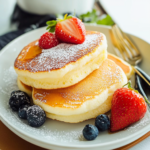
Fluffy Japanese Soufflé Pancakes
- Total Time: 35 minutes
- Yield: 3 pancakes 1x
Description
Incredibly fluffy, jiggly pancakes that have become a sensation both in Japan and internationally. These cloud-like creations wobble when served and feature a pillowy texture created by folding whipped egg whites into a simple pancake batter.
Ingredients
- 2 large eggs (50 g each w/o shell)
- 1 ½Tbsp whole milk(I haven‘t tried reduced-fat, low-fat, nonfat, or plant-based milk for this recipe as I believe the batter will be too thin to make souffle pancakes)
- ¼ tsp pure vanilla extract
- ¼ cupcake flour(weigh your flour or use the “fluff and sprinkle“ method and level it off; you can makehomemade cake flour)
- ½ ts pbaking powder
- 2 Tbsp sugar
- 1 Tbsp neutral oil(for greasing the pan)
- 2 Tbsp water(for steaming)
- ½ cup heavy (whipping) cream
- 1 ½ Tbsp sugar(add more if you like it sweeter)
- 1 Tbsp confectioners’ sugar
- fresh berries(strawberries, blueberries, etc.)
- maple syrup
Instructions
- Gather all the ingredients.I highly encourage you to use metric measurementsusing akitchen scalefor this recipe. Click on the “Metric“ button at the top of the recipe to convert the ingredient measurements to metric. You will also need a 12-inchnonstickfrying pan (large enough to cook 3 pancakes at the same time)with a lid. It‘s also nice to have aninfrared thermometer gunto check the temperature of the frying pan.
- If you‘d like to serve the Fluffy Japanese Soufflé Pancakes with optional fresh whipped cream, make it now. First, prepare an ice bath: Put ice cubes and water in a large bowl and place a clean and dry medium bowl on top of the ice water. Add½ cup heavy (whipping) creamand1½ Tbsp sugarto the medium bowl to keep them cold.
- Whisk on high speed until medium to firm peaks form. The cream should not be runny but soft, fluffy, and firm instead. Keep the whipped cream chilled until you‘re ready to serve the pancakes.
- Separate2 large eggs (50 g each w/o shell)into whites and yolks in two different bowls. Put the bowl with the egg whites in the freezer for 15 minutes. Why do we partially freeze the egg whites? Please read why in my post2 Tips to Make Perfect Meringue (Egg Whites).
- In the meantime, add1½ Tbsp whole milkand¼ tsp pure vanilla extractto the egg yolks and whisk using a hand whisk until thick and frothy.
- Sift¼ cup cake flourand½ tsp baking powderinto the bowl.
- Whisk to combine thoroughly; do not overmix. Set aside while you make the meringue.
- After 15 minutes, take out the bowl with the egg whites from the freezer. The egg whites should be half frozen. Now, start beating the egg whites with a hand mixer (you can also use a stand mixer or balloon whisk).
- When the egg whites turn frothy and opaque, gradually add in2 Tbsp sugar, roughly one-third of it at a time. Then, increase the mixer speed to high (Speed 10) and beat vigorously until stiff peaks form (see the next step for how to check). It takes about 2 minutes of beating at high speed to reach stiff peaks.Tip:When using a stand mixer, I usually pause beating when the meringue is almost done. Take off the whisk attachment from the mixer and use it to hand-mix the looser egg whites near the bowl’s edge into the stiffer whites near the center until it’s all homogenous in texture. Then, put the whisk back on and continue beating.
- To check for stiff peaks, stop whisking and pull up your beaters or whisk. The meringue in the bowl or on the whisk should be firm enough to hold a peak, pointing straight up (or maybe folding over a little bit just at the very tips). By this time, the meringue should have a glossy texture, too.Tip:If you overbeat the meringue, it will become very stiff and grainy and won’t incorporate into the batter at all.
- Heat a largenonstickfrying pan to 300ºF (150ºC) over the lowest heat. Brush with1 Tbsp neutral oiland lightly remove any visible oil with a paper towel (otherwise the pancakes will have a spotty pattern). Keep the pan on low heat while you fold in the egg white meringue into the egg yolk mixture in the next step.
- Take one-third of the egg white meringue and add to the egg yolk mixture. Whisk together by hand (don’t worry too much about breaking air bubbles at this point).
- Next, take half of the remaining meringue and add to the egg yolk mixture. Using a hand whisk, gently fold them in without breaking the air bubbles in the egg whites. Why do we use a whisk instead of a silicone spatula? Please read my post2 Tips to Make Perfect Meringue (Egg Whites).
- Now, transfer the egg yolk mixture back into the bowl with the remaining meringue. Very gently fold the two mixtures together, taking care not to deflate the air bubbles in the meringue and batter as you fold. Mix the batter very gently until well combined and homogenous.
- Keep your nonstick frying pan heated to300ºF (150ºC)at all timesover low heat. Remember, each pancake gets roughly four small scoops of batter, and you will be making three pancakes. For the first pancake, place one scoop of batter and make a tall mound in the frying pan, using a small ladle or a serving spoon (that’s bigger than a regular spoon—probably 2–3 Tbsp). Next, stack one more scoop of batter onto the first scoop already in the pan. Repeat for the next two pancakes, giving each pancake two scoops of batter.
- By the time all three pancakes have two scoops, the surface of the batter is slightly dry already. At this point, you can mound one more scoop on top of each pancake, keeping the batter piled up high. In the bowl, you should still have roughly three scoops left (if you have slightly more, that’s okay).
- Set the timer for 6–7 minutes and add 1 Tbsp of the2 Tbsp waterin three empty spaces inside the pan. Cover with a lid. The steam from the water keeps the pancakes moist while they cook.Please note:The suggested time is just a guideline; how long you will cook the pancakes is based on the temperature of your frying pan.
- After 2 minutes have passed, open the lid, and add one final scoop of batter to each pancake (or more scoops if you have more batter). Make sure to stack the batter high, not wide. If the water has evaporated, add a little bit more. Cover with the lid and cook.
- After 6–7 minutes have passed, lift the pancake VERY GENTLY using an offset spatula. If the pancake is stuck, don’t touch it until it firms up a little. If you force it, the pancake will crack in the middle. When the pancake is ready, you can easily move the pancake. Repeat with the other pancakes.
- Here is another set of images to show the process. Slightly pull the pancake to create an empty space and gently flip it over with a “rolling over” motion.
- Add another 1 Tbsp water to the empty spaces in the pan and cover. Set the timer for 4–5 minutes to cook the other side on the lowest heat setting.
- Once they are nicely browned, transfer the pancakes to your serving plates.
- Place the optional fresh whipped cream on the pancakes and top withfresh berries. Dust your Fluffy Japanese Soufflé Pancakes with1 Tbsp confectioners’ sugarand drizzle withmaple syrup. Enjoy!
- For the fluffiest texture, I recommend making these soufflé pancakes just before serving. If you have leftovers, transfer them to an airtight container and store in the refrigerator for up to 2 days.
Notes
Japanese souffle pancakes are best enjoyed fresh as they slowly deflate as they cool. If you have leftovers, store them in an airtight container in the refrigerator for up to 2 days. To reheat, warm them gently in the microwave for 15-20 seconds. Pre-warm serving plates to keep pancakes warm longer and don’t forget to gently shake the plate before serving to show off the signature jiggle.
- Prep Time: 20 minutes
- Cook Time: 15 minutes
- Category: Breakfast
- Method: Pan-frying and Steaming
- Cuisine: Japanese
Nutrition
- Serving Size: 1 pancake
- Calories: 185
- Sugar: 12g
- Sodium: 120mg
- Fat: 7g
- Saturated Fat: 2g
- Unsaturated Fat: 4g
- Trans Fat: 0g
- Carbohydrates: 25g
- Fiber: 0g
- Protein: 5g
- Cholesterol: 125mg
Keywords: japanese souffle pancakes

